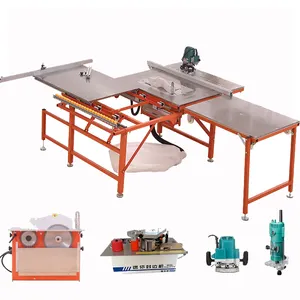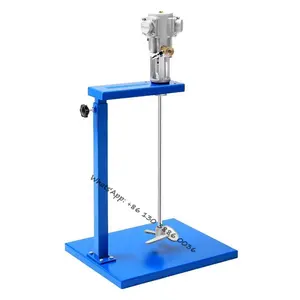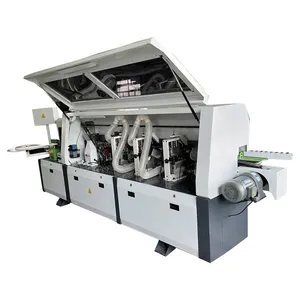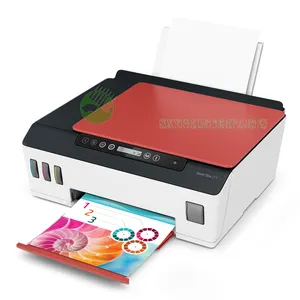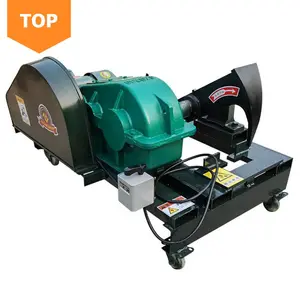Popular na sua indústria






Máquina de molde totalmente automática 20l, embalagem com 3 camadas de plástico de extrusão hdpe, molde de 20 litros, 25l
€ 30.404,88 - € 52.652,36
Pedido Mínimo: 1 Conjunto
Envio por peça: € 4.634,89






Vpack 2023 Nova versão 6-Cavity PET plástico Garrafa De Água Blow Moulding Machine/Automático 9000BPH Servo drive Garrafa blower
€ 7.415,83 - € 8.342,81
Pedido Mínimo: 1 Conjunto






Preço barato 100ML - 2L Garrafa de Plástico Máquina de Moldagem Por Sopro/Tomada de Garrafa PET
€ 3.244,43 - € 3.337,13
Pedido Mínimo: 1 Conjunto
Envio por peça: € 120,80







Máquina sopradora PET PlastStretch para moldagem por sopro de garrafas, moldes de cavidade 4/6 totalmente automática para soprar garrafas plásticas para animais de estimação
€ 9.269,78 - € 10.196,76
Pedido Mínimo: 1 Conjunto







Alta qualidade hdpe pp pe garrafa de animal de estimação plástico lata de produção extrusão sopro máquina de molde
€ 12.830,31
Pedido Mínimo: 1 Conjunto







Máquina de fabricação de garrafa de bebida macia da cavidade da joanete e máquina plástica da garrafa
€ 4.633,97 - € 4.634,89
Pedido Mínimo: 1 Conjunto
Envio por peça: € 1.853,96





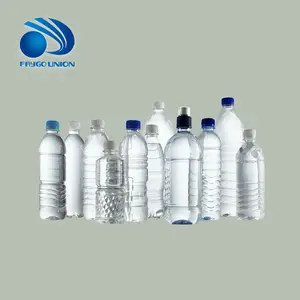

Laser union garrafa de pet semi automática, alta velocidade, fabricante de garrafas elásticas, máquina de molde/sopro, preço
€ 2.780,94 - € 2.966,33
Pedido Mínimo: 1 Conjunto
Envio por peça: € 1.853,96






TXM pet garrafa máquinas pet estiramento sopro máquina moldagem plástico soprando máquinas
€ 926,98 - € 2.780,94
Pedido Mínimo: 1 Conjunto






Máquina de molde de pressão, 10l 20l 3 5 galão grande garrafa de água pet semi automático estiramento inflável máquina de molde
€ 6.303,46 - € 6.674,25
Pedido Mínimo: 1 Conjunto






Máquina de moldagem por sopro para garrafas plásticas PET semiautomáticas de baixo preço
€ 926,98 - € 2.780,94
Pedido Mínimo: 1 Conjunto
Envio por peça: € 18,54
Buscas Relacionadas:
garrafa estiramento sopro máquina moldagemmáquina moldagem do sopro para a garrafa petpet plástico garrafa moldagem sopro máquinapet garrafa soprando moldagem máquina2l pet garrafa sopro moldagem máquina5l pet garrafa sopro moldagem máquinasedel pet garrafa sopro moldagem máquina10l pet garrafa sopro moldagem máquina2017 pet garrafa sopro máquina moldagemmáquina moldando do sopro para a garrafa plásticamini pet garrafa sopro máquina moldagempet garrafa sopro máquina moldagempet garrafa sopro moldagem máquina preçopet stretch sopro moldagem máquinaspet garrafa sopro máquina moldagem






Semi Automático Manual 2 Cavidades Garrafa PET de Moldagem Por Sopro/Máquina De Moldagem
€ 3.059,03 - € 3.244,43
Pedido Mínimo: 1 Conjunto
Envio por peça: € 99.616,77






Garrafa de estriagem semi automática 5 galões, máquina de moldagem de garrafa do animal de estimação
€ 3.244,43
Pedido Mínimo: 1 Conjunto






Máquina de molde de garrafa do pet da garrafa do tipo linear da alta velocidade automática completa para 100-2000ml
€ 5.098,38
Pedido Mínimo: 1 Conjunto






Máquina de fabricação de garrafa de plástico 4 cavidades, máquina de molde de garrafa de animal de estimação para 100ml a 3l fábrica
€ 3.337,13
Pedido Mínimo: 1 Conjunto






2022 automático 4 cavidade 4000bph pequeno plástico pet jar soprador garrafa estiramento sopro fazendo sopro máquina de moldagem
€ 7.415,83 - € 7.879,32
Pedido Mínimo: 1 Conjunto
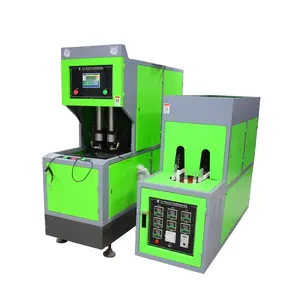





Máquina de sopro de garrafa do animal de estimação, semi automática da garrafa/máquina de molde de garrafa plástica do animal de estimação
€ 1.742,72
Pedido Mínimo: 1 Conjunto






Alta saída ce aprovado isbm um-passo, injeção, estiramento, molde, máquina de molde para fazer plástico garrafa cosmética animal de estimação
€ 25.955,39 - € 100.113,63
Pedido Mínimo: 1 Peça






Máquina de sopro semiautomática de garrafas PET/máquina de molde plástica PET para molde por sopro de garrafas
€ 1.853,96
Pedido Mínimo: 1 Conjunto
Envio por peça: € 695.161,20






Máquina de molde de baixa rejeição para garrafas de suco pet
€ 4.634,89 - € 5.561,87
Pedido Mínimo: 1 Unidade






LS-B3L 1000BPH semi automática fácil operação garrafa PET estiramento sopro moldagem máquina preço 10Ml a 3L sopladora de botella pet
Pronto para enviar
€ 2.780,94 - € 3.059,03
Pedido Mínimo: 1 Conjunto
Envio por peça: € 131,74






Máquina de moldagem por sopro semiautomática para garrafas PET 18.9L
€ 5.191,08
Pedido Mínimo: 1 Conjunto
Envio por peça: € 370,80






PET pescoço largo jar injeção estiramento máquina de moldagem por sopro
€ 9.269,78 - € 74.158,24
Pedido Mínimo: 1 Conjunto






Garrafa de água mineral semi automática 6l, máquina de molde de sopro
€ 3.059,03 - € 3.244,43
Pedido Mínimo: 1 Conjunto






Máquina de molde de pressão, 10l 20l 3 5 galão grande garrafa de água pet semi automático estiramento inflável máquina de molde
€ 1.390,47 - € 2.780,94
Pedido Mínimo: 1 Conjunto






Máquina de moldagem de garrafa de plástico elástica automática completa, garrafa de animal de estimação, preço da máquina de moldagem
€ 16.685,61 - € 18.539,56
Pedido Mínimo: 1 Conjunto






Garrafa de água para pet, garrafa de água pequena de 10 litros automática
€ 4.171,41 - € 4.634,89
Pedido Mínimo: 1 Conjunto






Máquina de fazer garrafas de água de plástico PET, soprador de garrafas pequenas, pré-formas, máquinas de moldagem por sopro
€ 3.244,43 - € 7.879,32
Pedido Mínimo: 1 Conjunto






Máquina automática de moldagem por sopro para garrafas PET 4000BPH com 4 cavidades
€ 26.882,37 - € 28.736,32
Pedido Mínimo: 1 Conjunto
Envio por peça: € 2.085,71






Máquina de molde de garrafa de pet automática, alta eficiência de baixo custo de 2 cavidades
€ 10.011,37
Pedido Mínimo: 1 Conjunto






Máquina de molde rotativa de alta velocidade automática completa, garrafa pet, soprador, para 100-2000ml
€ 12.514,21
Pedido Mínimo: 1 Conjunto






Máquina de molde de garrafa de água pet, máquina rotativa de molde para garrafas
€ 4.171,41
Pedido Mínimo: 1 Conjunto






Máquina de moldagem por sopro de garrafas plásticas semiautomáticas de alta velocidade com 4 cavidades
€ 4.912,99 - € 5.098,38
Pedido Mínimo: 1 Conjunto






Máquina sopradora de garrafas PET/máquina sopradora de garrafas PET/máquina de moldagem por sopro
€ 5.124,34
Pedido Mínimo: 1 Conjunto






Máquina de sopro de garrafa de 5 galões 20l, máquina de moldagem de estiramento para garrafa de animal de estimação
€ 12.745,95
Pedido Mínimo: 1 Conjunto






Garrafa de plástico 5 galões PET estiramento sopro máquinas semi auto pet garrafa extrusão soprando máquina
€ 1.668,57 - € 2.317,45
Pedido Mínimo: 1 Conjunto






Máquina de molde de garrafa de água do animal de estimação, semi automática
€ 3.522,52 - € 4.449,50
Pedido Mínimo: 1 Conjunto






Máquina de moldagem semi-automática de garrafa, máquina de sopro de garrafa elástica de plástico do animal de estimação, máquina de sopro
€ 3.198,08 - € 3.383,47
Pedido Mínimo: 1 Conjunto
Principais categorias
Sobre pet garrafa estiramento sopro moldagem máquina
Alibaba.com apresenta alguns dos mais convenientes e poderosos. pet garrafa estiramento sopro moldagem máquina que pode atender a seus objetivos com supereficiência, especialmente no setor de manufatura. Esses produtos são feitos com qualidade durável e são sustentáveis contra todos os tipos de usos pesados e outros impactos externos. O. As pet garrafa estiramento sopro moldagem máquina oferecidas no site são certificadas e oferecem desempenho estável, com operações manuais e automáticas, tornando-os fáceis de usar. O. pet garrafa estiramento sopro moldagem máquina são oferecidos aqui pelos principais fornecedores e atacadistas que garantem qualidade e preços competitivos nos produtos.
O incrivelmente poderoso e superior. As pet garrafa estiramento sopro moldagem máquina disponíveis no site são feitas de metais endurecidos que contribuem para sua durabilidade, resistência e sustentabilidade superiores, ajudando-as a durar muitos anos. O. As pet garrafa estiramento sopro moldagem máquina apresentadas no site são equipadas com recursos de injeção de combustível totalmente automatizados, recursos de sopro linear de garrafas da série K e muito mais para oferecer desempenho ideal e estabilidade brilhante nas operações. Estes. pet garrafa estiramento sopro moldagem máquina são úteis para criar tamanhos e formatos distintos de garrafas para atender às suas necessidades específicas.
O Alibaba.com tem vários. pet garrafa estiramento sopro moldagem máquina estocados em diferentes formas, tamanhos, capacidades, recursos e designs que são baseados em seus requisitos e modelos selecionados. Selecione entre a enorme variedade de. pet garrafa estiramento sopro moldagem máquina que têm maior eficiência e são fáceis de operar, além de serem eficientes em termos de energia. Estes são ecológicos. pet garrafa estiramento sopro moldagem máquina são eficientes na fabricação de garrafas de bebidas, garrafas de água mineral, condimentos e muito mais, dependendo de suas necessidades.
Explore a enorme variedade de. pet garrafa estiramento sopro moldagem máquina em Alibaba.com para comprar esses produtos dentro de seus requisitos e orçamento ao mesmo tempo. Essas máquinas capacitivas são certificadas pela ISO e vêm com serviços de pós-venda proficientes para evitar qualquer tipo de complicações após a compra. Eles valem cada centavo investido devido à sua longa durabilidade, serviço e conjuntos de recursos avançados.
O incrivelmente poderoso e superior. As pet garrafa estiramento sopro moldagem máquina disponíveis no site são feitas de metais endurecidos que contribuem para sua durabilidade, resistência e sustentabilidade superiores, ajudando-as a durar muitos anos. O. As pet garrafa estiramento sopro moldagem máquina apresentadas no site são equipadas com recursos de injeção de combustível totalmente automatizados, recursos de sopro linear de garrafas da série K e muito mais para oferecer desempenho ideal e estabilidade brilhante nas operações. Estes. pet garrafa estiramento sopro moldagem máquina são úteis para criar tamanhos e formatos distintos de garrafas para atender às suas necessidades específicas.
O Alibaba.com tem vários. pet garrafa estiramento sopro moldagem máquina estocados em diferentes formas, tamanhos, capacidades, recursos e designs que são baseados em seus requisitos e modelos selecionados. Selecione entre a enorme variedade de. pet garrafa estiramento sopro moldagem máquina que têm maior eficiência e são fáceis de operar, além de serem eficientes em termos de energia. Estes são ecológicos. pet garrafa estiramento sopro moldagem máquina são eficientes na fabricação de garrafas de bebidas, garrafas de água mineral, condimentos e muito mais, dependendo de suas necessidades.
Explore a enorme variedade de. pet garrafa estiramento sopro moldagem máquina em Alibaba.com para comprar esses produtos dentro de seus requisitos e orçamento ao mesmo tempo. Essas máquinas capacitivas são certificadas pela ISO e vêm com serviços de pós-venda proficientes para evitar qualquer tipo de complicações após a compra. Eles valem cada centavo investido devido à sua longa durabilidade, serviço e conjuntos de recursos avançados.
